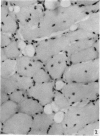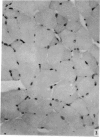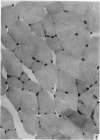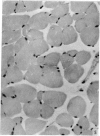Abstract
Hypertrophy of the extensor digitorum longus muscle after surgical removal of its companion tibialis anterior muscle has been studied in mice. Early, intermediate and late stages in the process of hypertrophy have been defined. The proportional increase in the man cross sectional area of fibres in a hypertrophic muscle consistently exceeded the proportional increase in the weight of the same muscle in all animals. This suggests that hypoplasis (loss of fibres) was occurring. This work was carried out with the aid of grants from the Medical Research Council and Science Research Council of Great Britain.
Full text
PDF
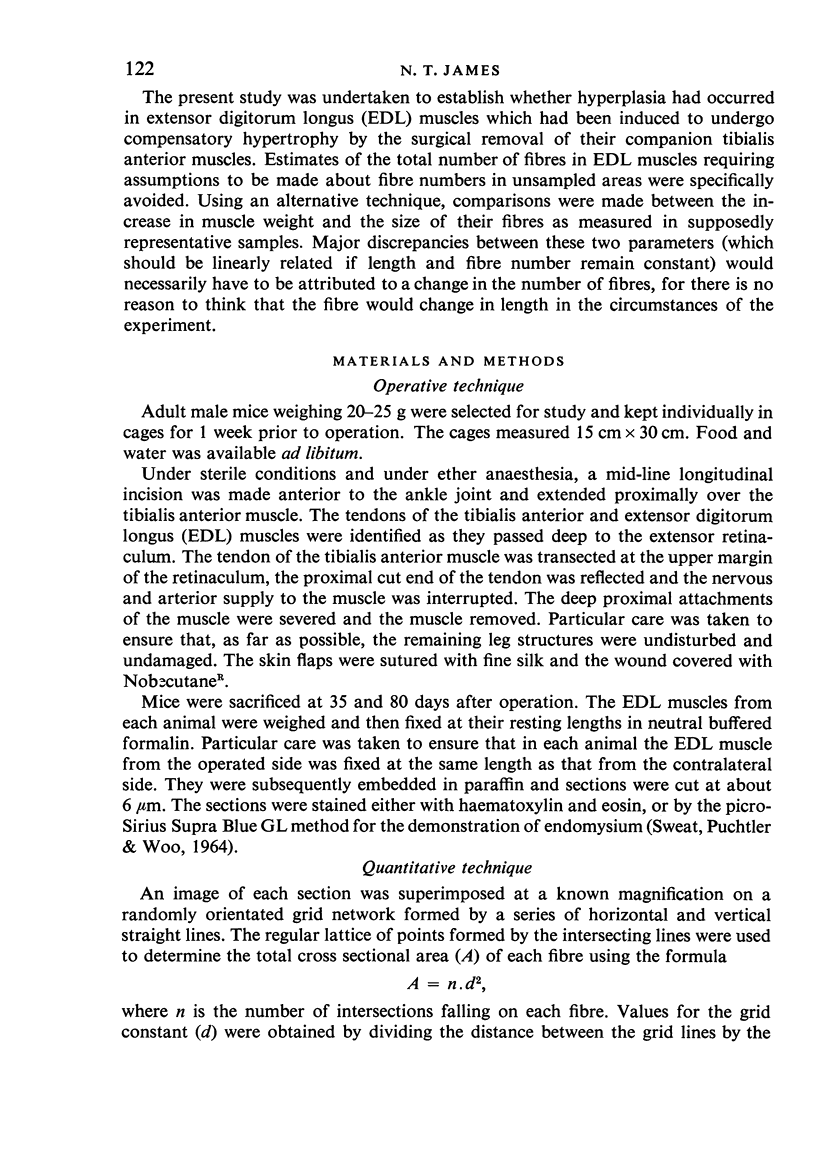
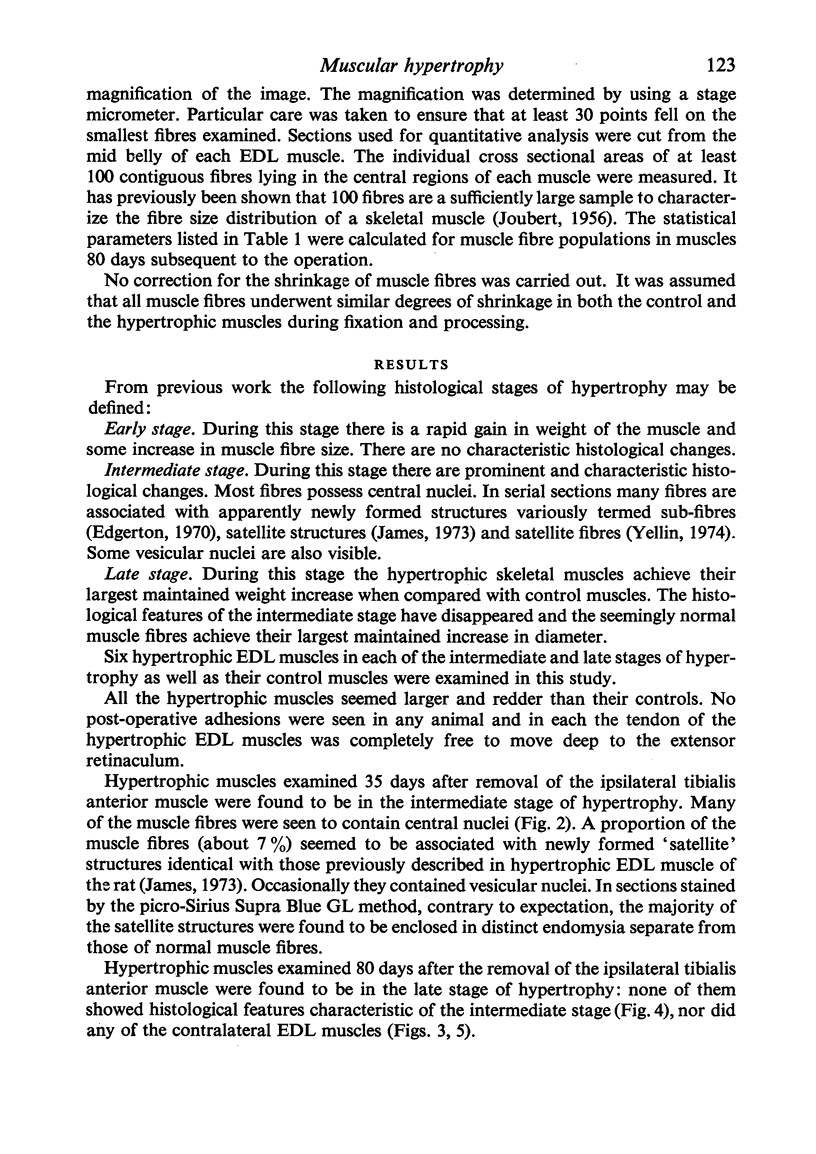
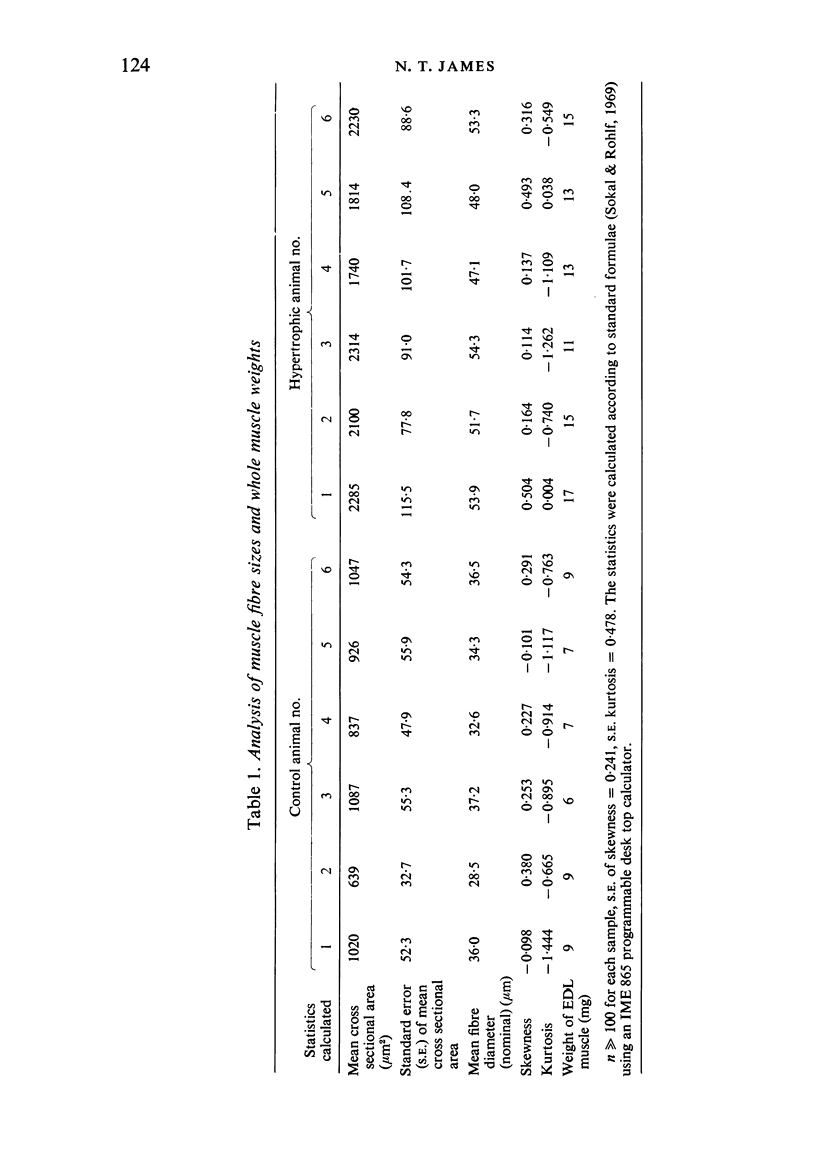
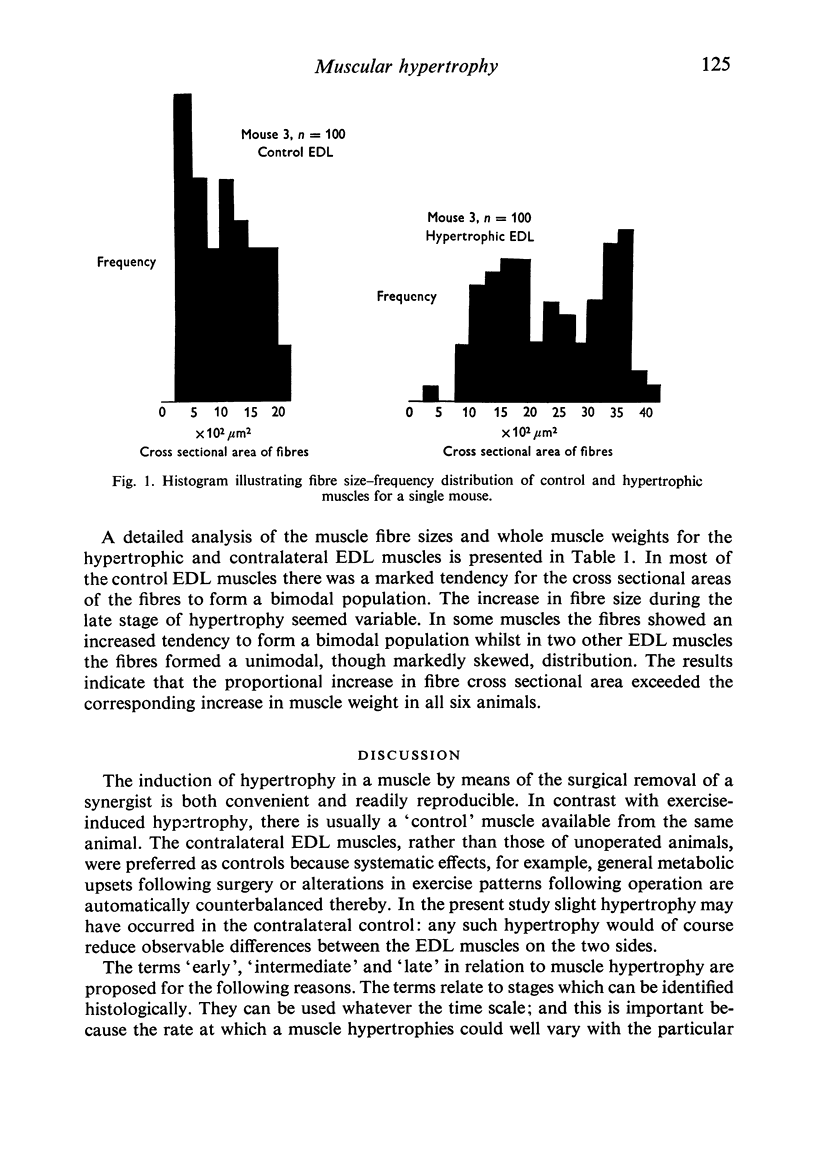
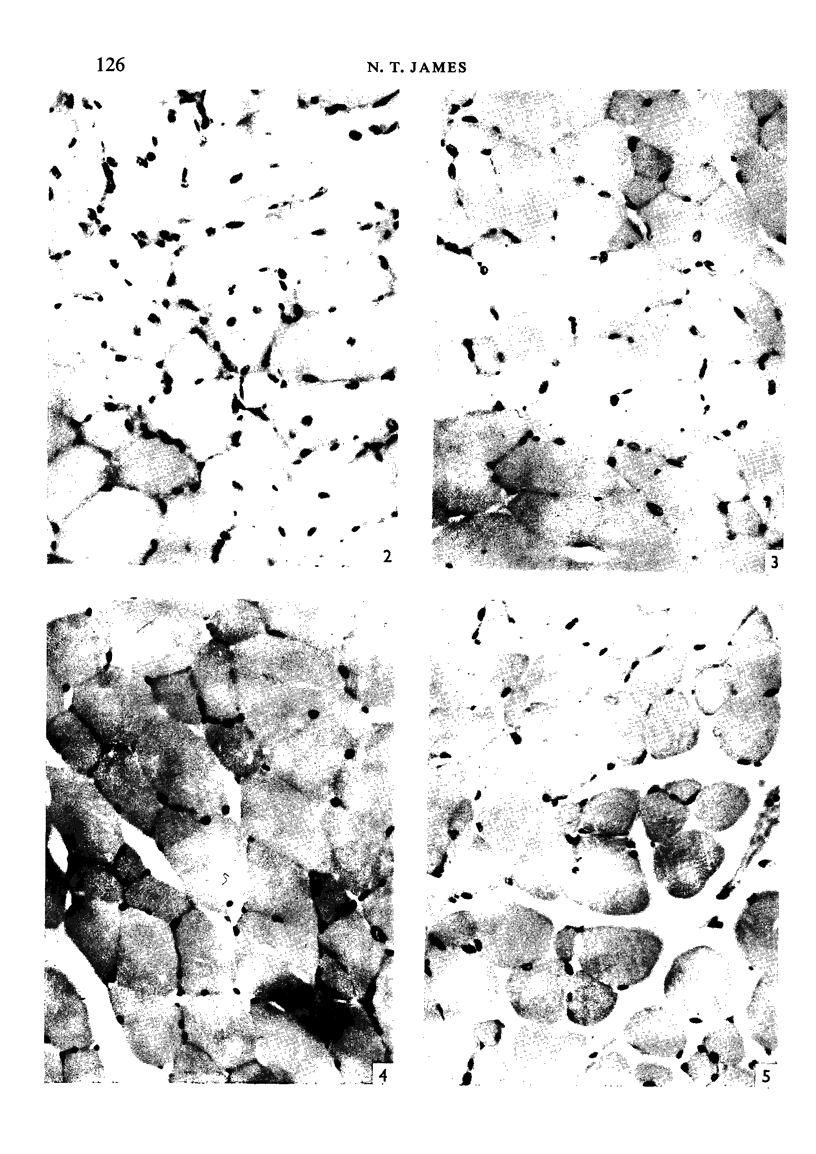
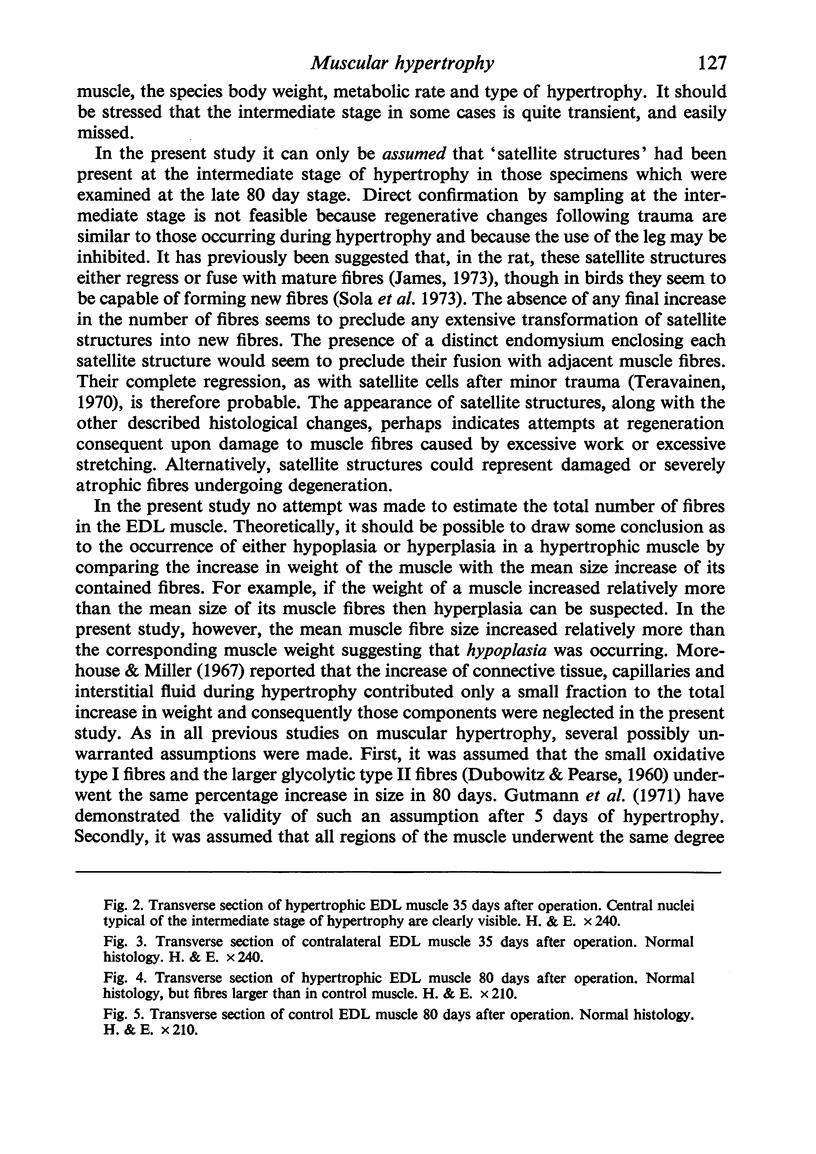
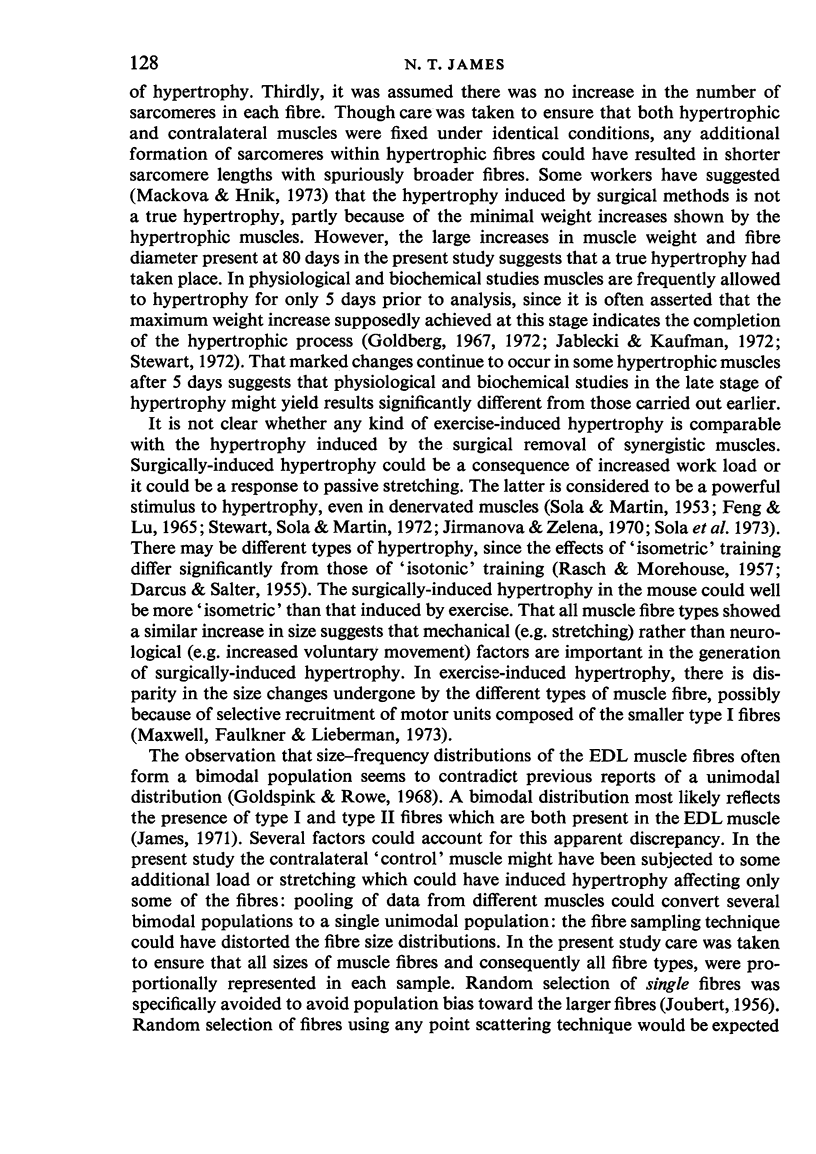

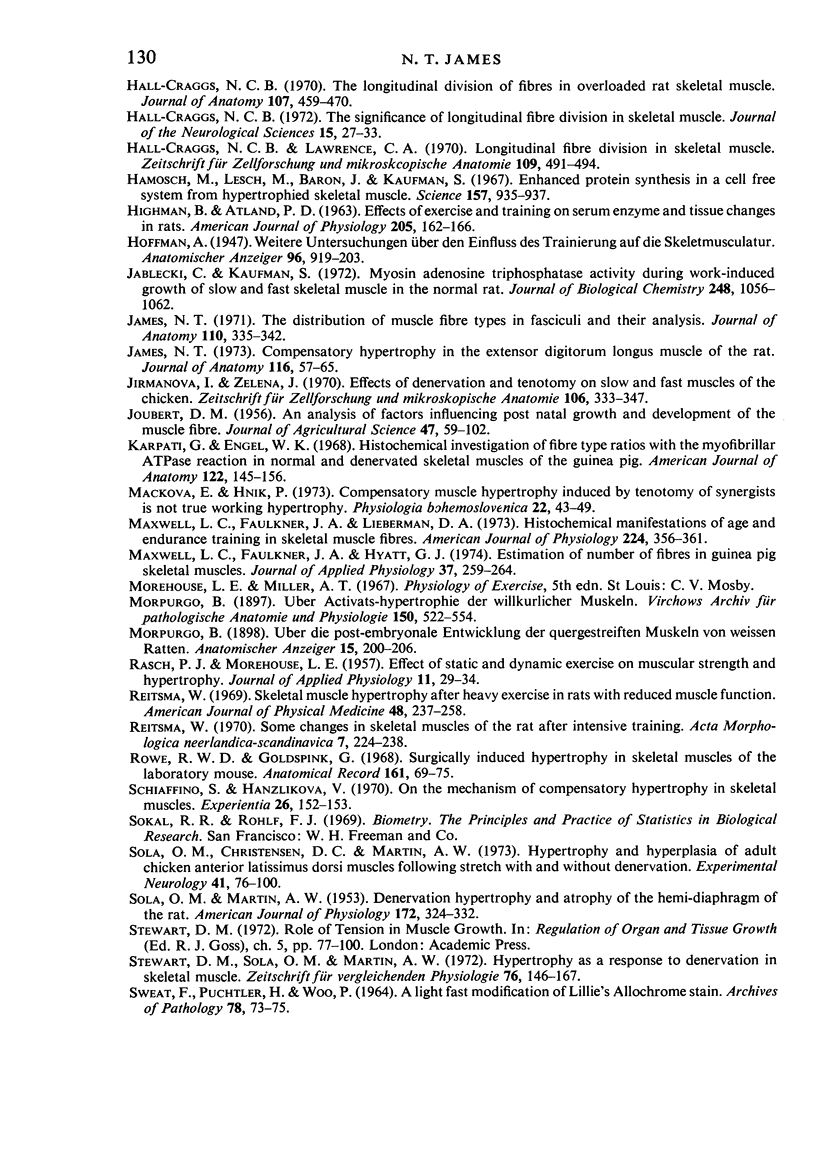
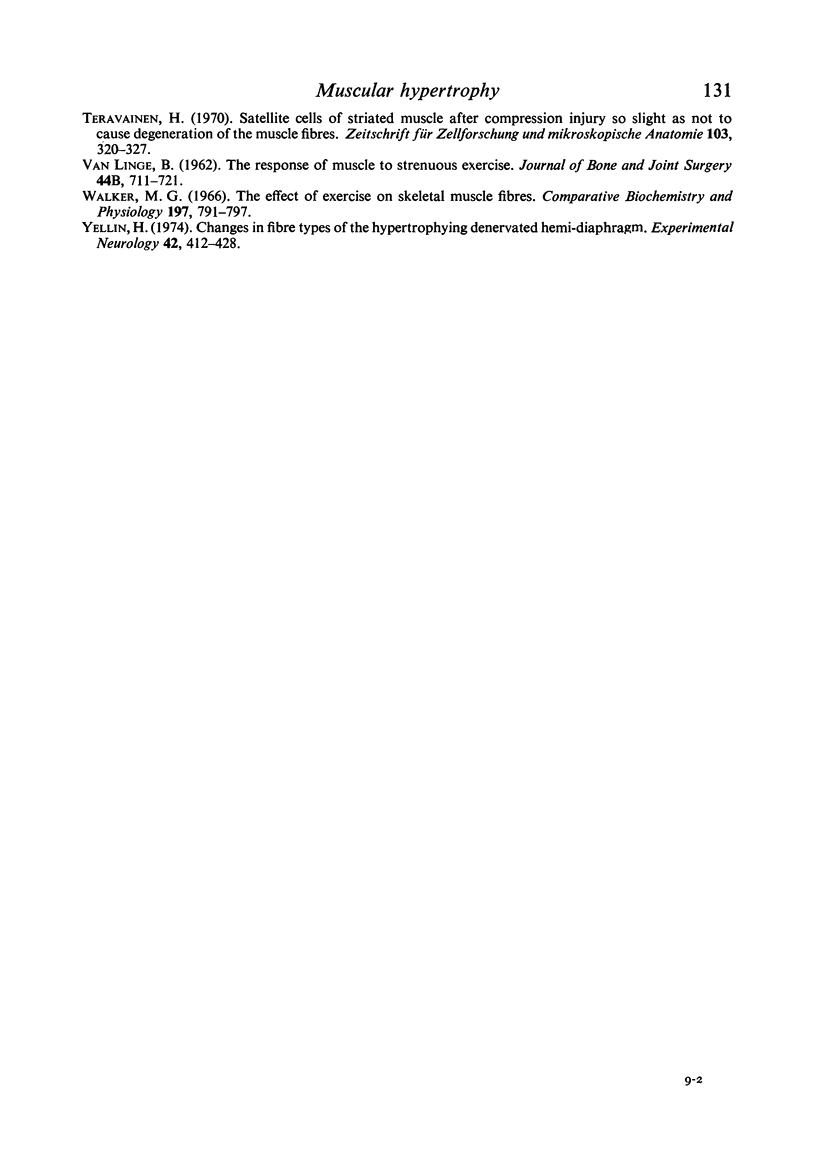
Images in this article
Selected References
These references are in PubMed. This may not be the complete list of references from this article.
- Binkhorst R. A. The effect of training on some isometric contraction characteristics of a fast muscle. Pflugers Arch. 1969;309(3):193–202. doi: 10.1007/BF00586797. [DOI] [PubMed] [Google Scholar]
- CRAWFORD G. N. Experimentally induced hypertrophy of growing voluntary muscle. Proc R Soc Lond B Biol Sci. 1961 Apr 18;154:130–138. doi: 10.1098/rspb.1961.0024. [DOI] [PubMed] [Google Scholar]
- DARCUS H. D., SALTER N. The effect of repeated muscular exertion on muscle strength. J Physiol. 1955 Aug 29;129(2):325–336. doi: 10.1113/jphysiol.1955.sp005357. [DOI] [PMC free article] [PubMed] [Google Scholar]
- DUBOWITZ V., PEARSE A. G. A comparative histochemical study of oxidative enzyme and phosphorylase activity in skeletal muscle. Z Zellforch Microsk Anat Histochem. 1960;2:105–117. doi: 10.1007/BF00744575. [DOI] [PubMed] [Google Scholar]
- Edgerton V. R. Morphology and histochemistry of the soleus muscle from normal and exercised rats. Am J Anat. 1970 Jan;127(1):81–87. doi: 10.1002/aja.1001270107. [DOI] [PubMed] [Google Scholar]
- Etemadi A. A., Hosseini F. Frequency and size of muscle fibers in athletic body build. Anat Rec. 1968 Nov;162(3):269–273. doi: 10.1002/ar.1091620302. [DOI] [PubMed] [Google Scholar]
- Faulkner J. A., Maxwell L. C., Brook D. A., Lieberman D. A. Adaptation of guinea pig plantaris muscle fibers to endurance training. Am J Physiol. 1971 Jul;221(1):291–297. doi: 10.1152/ajplegacy.1971.221.1.291. [DOI] [PubMed] [Google Scholar]
- Feng T. P., Lu D. X. New lights on the phenomenon of transient hypertrophy in the denervated hemidiaphragm of the rat. Sci Sin. 1965 Dec;14(12):1772–1784. [PubMed] [Google Scholar]
- GOLDSPINK G. CYTOLOGICAL BASIS OF DECREASE IN MUSCLE STRENGTH DURING STARVATION. Am J Physiol. 1965 Jul;209:100–104. doi: 10.1152/ajplegacy.1965.209.1.100. [DOI] [PubMed] [Google Scholar]
- Goldberg A. L., Goodman H. M. Amino acid transport during work-induced growth of skeletal muscle. Am J Physiol. 1969 May;216(5):1111–1115. doi: 10.1152/ajplegacy.1969.216.5.1111. [DOI] [PubMed] [Google Scholar]
- Goldberg A. L. Mechanisms of growth and atrophy of skeletal muscle. Muscle Biol. 1972;1:89–118. [PubMed] [Google Scholar]
- Goldberg A. L. Work-induced growth of skeletal muscle in normal and hypophysectomized rats. Am J Physiol. 1967 Nov;213(5):1193–1198. doi: 10.1152/ajplegacy.1967.213.5.1193. [DOI] [PubMed] [Google Scholar]
- Gordon E. E. Anatomical and biochemical adaptations of muscle to different exercises. JAMA. 1967 Sep 4;201(10):755–758. [PubMed] [Google Scholar]
- Gutmann E., Schiaffino S., Hanzliková V. Mechanism of compensatory hypertrophy in skeletal muscle of the rat. Exp Neurol. 1971 Jun;31(3):451–464. doi: 10.1016/0014-4886(71)90248-2. [DOI] [PubMed] [Google Scholar]
- HIGHMAN B., ALTLAND P. D. Effects of exercise and training on serum enzyme and tissue changes in rats. Am J Physiol. 1963 Jul;205:162–166. doi: 10.1152/ajplegacy.1963.205.1.162. [DOI] [PubMed] [Google Scholar]
- Hall-Craggs E. C., Lawrence C. A. Longitudinal fibre division in skeletal muscle: a light- and electronmicroscopic study. Z Zellforsch Mikrosk Anat. 1970;109(4):481–494. doi: 10.1007/BF00343963. [DOI] [PubMed] [Google Scholar]
- Hall-Craggs E. C. The longitudinal division of fibres in overloaded rat skeletal muscle. J Anat. 1970 Nov;107(Pt 3):459–470. [PMC free article] [PubMed] [Google Scholar]
- Hall-Craggs E. C. The significance of longitudinal fibre division in skeletal muscle. J Neurol Sci. 1972;15(1):27–33. doi: 10.1016/0022-510x(72)90119-0. [DOI] [PubMed] [Google Scholar]
- Hamosch M., Lesch M., Baron J., Kaufman S. Enhanced protein synthesis in a cell-free system from hypertrophied skeletal muscle. Science. 1967 Aug 25;157(3791):935–937. doi: 10.1126/science.157.3791.935. [DOI] [PubMed] [Google Scholar]
- Jablecki C., Kaufman S. Myosin adenosine triphosphatase activity during work-induced growth of slow and fast skeletal muscle in the normal rat. J Biol Chem. 1973 Feb 10;248(3):1056–1062. [PubMed] [Google Scholar]
- James N. T. Compensatory hypertrophy in the extensor digitorum longus muscle of the rat. J Anat. 1973 Oct;116(Pt 1):57–65. [PMC free article] [PubMed] [Google Scholar]
- James N. T. The distribution of muscle fibre types in fasciculi and their analysis. J Anat. 1971 Dec;110(Pt 3):335–342. [PMC free article] [PubMed] [Google Scholar]
- Jirmanová I., Zelená J. Effect of denervation and tenotomy on slow and fast muscles of the chicken. Z Zellforsch Mikrosk Anat. 1970;106(3):333–347. doi: 10.1007/BF00335777. [DOI] [PubMed] [Google Scholar]
- Karpati G., Engel W. K. Histochemical investigation of fiber type ratios with the myofibrillar ATP-ase reaction in normal and denervated skeletal muscles of guinea pig. Am J Anat. 1968 Jan;122(1):145–155. doi: 10.1002/aja.1001220109. [DOI] [PubMed] [Google Scholar]
- Macková E., Hník P. Compensatory muscle hypertrophy induced by tenotomy of synergists is not true working hypertrophy. Physiol Bohemoslov. 1973;22(1):43–49. [PubMed] [Google Scholar]
- Maxwell L. C., Faulkner J. A., Hyatt G. J. Estimation of number of fibers in guinea pig skeletal muscles. J Appl Physiol. 1974 Aug;37(2):259–264. doi: 10.1152/jappl.1974.37.2.259. [DOI] [PubMed] [Google Scholar]
- Maxwell L. C., Faulkner J. A., Lieberman D. A. Histochemical manifestations of age and endurance training in skeletal muscle fibers. Am J Physiol. 1973 Feb;224(2):356–361. doi: 10.1152/ajplegacy.1973.224.2.356. [DOI] [PubMed] [Google Scholar]
- RASCH P. J., MOREHOUSE L. E. Effect of static and dynamic exercises on muscular strength and hypertrophy. J Appl Physiol. 1957 Jul;11(1):29–34. doi: 10.1152/jappl.1957.11.1.29. [DOI] [PubMed] [Google Scholar]
- Reitsma W. Skeletal muscle hypertrophy after heavy exercise in rats with surgically reduced muscle function. Am J Phys Med. 1969 Oct;48(5):237–258. [PubMed] [Google Scholar]
- Rowe R. W., Goldspink G. Surgically induced hypertrophy in skeletal muscles of the laboratory mouse. Anat Rec. 1968 May;161(1):69–75. doi: 10.1002/ar.1091610107. [DOI] [PubMed] [Google Scholar]
- SOLA O. M., MARTIN A. W. Denervation hypertrophy and atrophy of the hemidiaphragm of the rat. Am J Physiol. 1953 Feb;172(2):324–332. doi: 10.1152/ajplegacy.1953.172.2.324. [DOI] [PubMed] [Google Scholar]
- SWEAT F., PUCHTLER H., WOO P. A LIGHT-FAST MODIFICATION OF LILLIE'S ALLOCHROME STAIN. PERIODIC ACID-SHIFF-PICRO-SIRIUS SUPRA BLUE GL. Arch Pathol. 1964 Jul;78:73–75. [PubMed] [Google Scholar]
- Schiaffino S., Hanzlíková V. On the mechanism of compensatory hypertrophy in skeletal muscles. Experientia. 1970;26(2):152–153. doi: 10.1007/BF01895548. [DOI] [PubMed] [Google Scholar]
- Sola O. M., Christensen D. L., Martin A. W. Hypertrophy and hyperplasia of adult chicken anterior latissimus dorsi muscles following stretch with and without denervation. Exp Neurol. 1973 Oct;41(1):76–100. doi: 10.1016/0014-4886(73)90182-9. [DOI] [PubMed] [Google Scholar]
- Teräväinen H. Satellite cells of striated muscle after compression injury so slight as not to cause degeneration of the muscle fibres. Z Zellforsch Mikrosk Anat. 1970;103(3):320–327. doi: 10.1007/BF00335276. [DOI] [PubMed] [Google Scholar]
- VAN LINGE B. The response of muscle to strenuous exercise. An experimental study in the rat. J Bone Joint Surg Br. 1962 Aug;44-B:711–721. doi: 10.1302/0301-620X.44B3.711. [DOI] [PubMed] [Google Scholar]
- Yellin H. Changes in fiber types of the hypertrophying denervated hemidiaphragm. Exp Neurol. 1974 Feb;42(2):412–428. doi: 10.1016/0014-4886(74)90035-1. [DOI] [PubMed] [Google Scholar]



